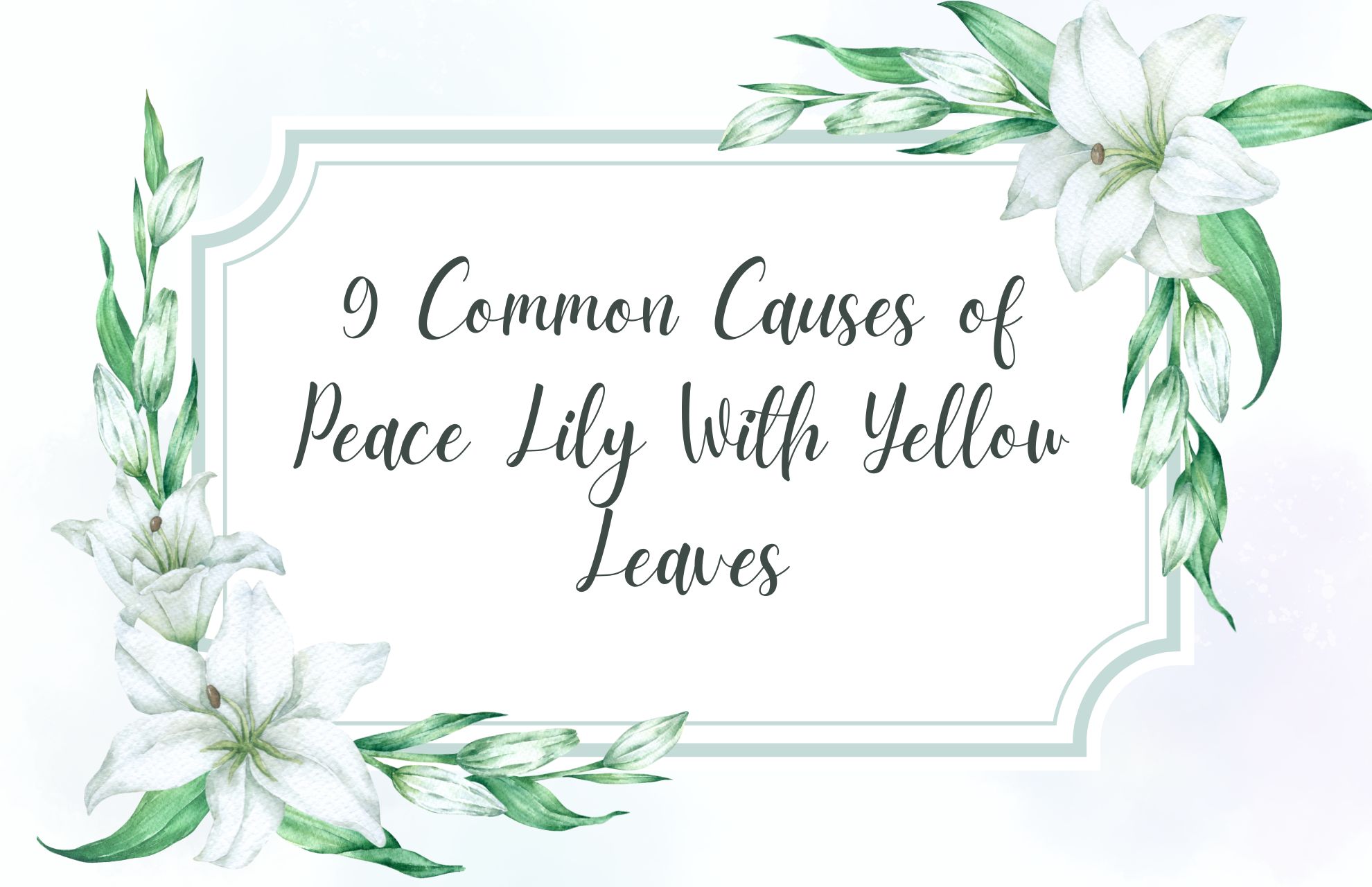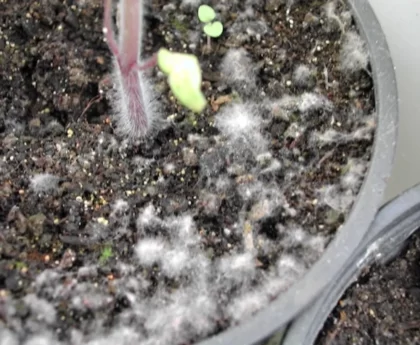In this article, we’ll go over nine of the most common causes of leaf discoloration in peace lilies and what you can do to fix or lessen the problem.
Popular and eye-catching indoor plants include Spathiphyllum (peace lily plants). Low-light conditions don’t hinder it much. Plants can grow up to four feet high or more, depending on the variety. The white flowers last a long time and are attractive and fragrant.
But just because peace lilies are laid-back doesn’t mean you won’t run into problems. You might experience problems with wilting or browning leaves. The strange occurrence of yellowing leaves, however, is the most obvious issue.
Peace lily leaves can turn yellow for a variety of reasons, ruining the plant’s renowned elegant, tropical appearance. With these suggestions, you can quickly nurse your plant back to health and fix yellowing peace lilies. You Might Also Like: Brown Tips On Peace Lily: 5 Reasons And Solutions
Aging
Plant leaves don’t remain on the plant forever. We tend not to notice foliage yellowing and dropping as it ages on plants with lots of small leaves, like weeping figs, but aging leaves are a lot more obvious on plants with larger leaves like peace lilies. Growers may panic as a result, but hold off on your stress just yet.
The Solution

Pruning older, lower Peace Lily Spathiphyllum leaves when they start to turn yellow is all that is necessary. Take out the leaves with a clean, sharp cutting tool. Blades that are dull and dirty spread disease and cause damage.
Fertilizer Issues
While testing garden soil is a typical outdoor task, few people consider testing their potting soil. It’s worthwhile to do if your plants’ leaves are discolored. Foliage that is light yellow can be a sign of low nitrogen levels.
But you don’t want to go tossing in lots of fertilizer if your Spathiphyllum doesn’t need it. That can also result in a variety of problems, such as yellowing and browning leaves.
The Solution
Conducting a soil test would be the ideal solution, but indoor plants don’t typically use that method very often. Give your peace lily a small dose of a balanced liquid fertilizer instead, and then wait a few weeks to see if that resolves the issue.
Repotting won’t hurt either in the long run when dealing with nutrient problems. Potted soil eventually degrades due to nutrients leaching out and structural damage. After a brief adjustment period, your plant should resume normal behavior if you give it new soil and a pot.
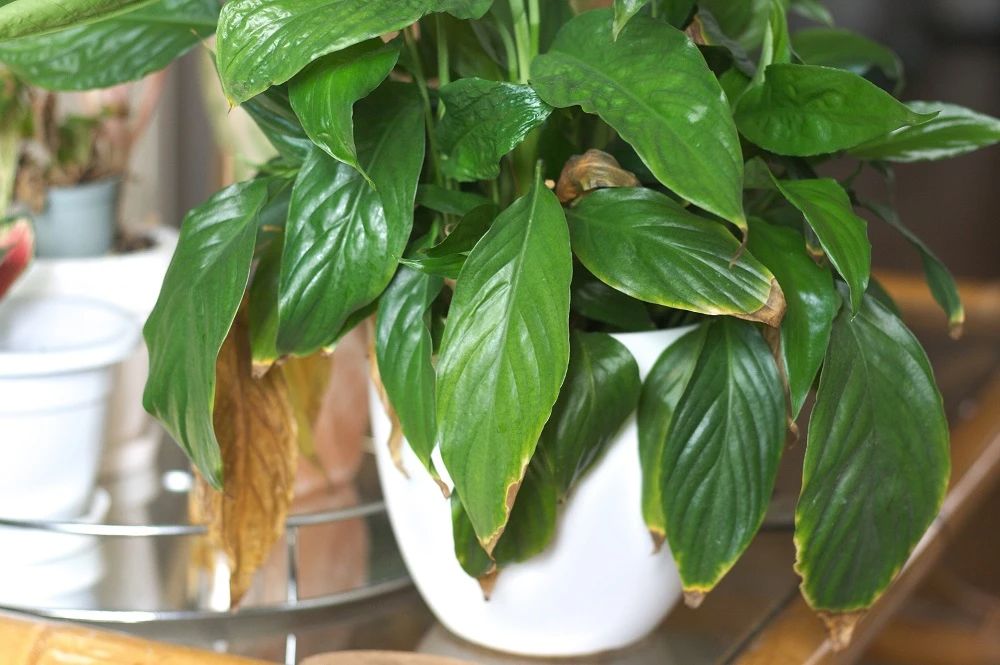
Overwatering
One of the primary indicators that a plant is being overwatered can be yellowing peace lily leaves. Brown leaf tips and wilted foliage are two additional signs of overwatering in addition to yellowing leaves. If not addressed, overwatering can result in other issues like root rot, fungal diseases, and pests.
Peace lilies, also known as Spathiphyllum, grow in moist conditions within the jungles of Asia Pacific and South America. Although they favor moist soil, they detest being flooded.
The Solution
Look at the soil with your finger. Overwatering is indicated if the soil feels extremely moist. When watered regularly, peace lilies benefit from once a week of irrigation. Give the plant water when the top inch or two of the soil feels dry to prevent problems like overwatering.
Read more about other plants’ leaves turning yellow:
- Why Bamboo Leaves Are Turning Yellow?
- Why Do Basil Leaves Turn Yellow?
- 10 Reasons Why Your Pothos Leaves Turning Yellow
- Orchid Leaves Turning Yellow: 12 Reasons
- Hibiscus Turning Yellow Leaves: 7 Reasons
Underwatering
Another reason why peace lily leaves turn yellow is underwatering. Although peace lilies dislike standing water, they also can’t stand dry ground. About once a week, these aroids should be watered and require fairly moist soil.
The Solution
You’ll need to do some investigation to figure out whether the yellow leaves are the result of overwatering or underwatering. To check the soil, test it with your finger or a hygrometer. Your peace lily is underwatered if it feels dry to the touch or begins to pull away from the nursery pot’s edges.
When the top inch or two of the growing medium feel dry, give your peace lily a good drink to prevent underwatering.
Incorrect Light Levels
Exposure to insufficient amounts of sunlight is another potential reason why peace lily plants’ leaves are yellow. Rather than receiving direct sunlight, peace lilies frequently grow in dappled shade on the forest floor of tropical jungles.
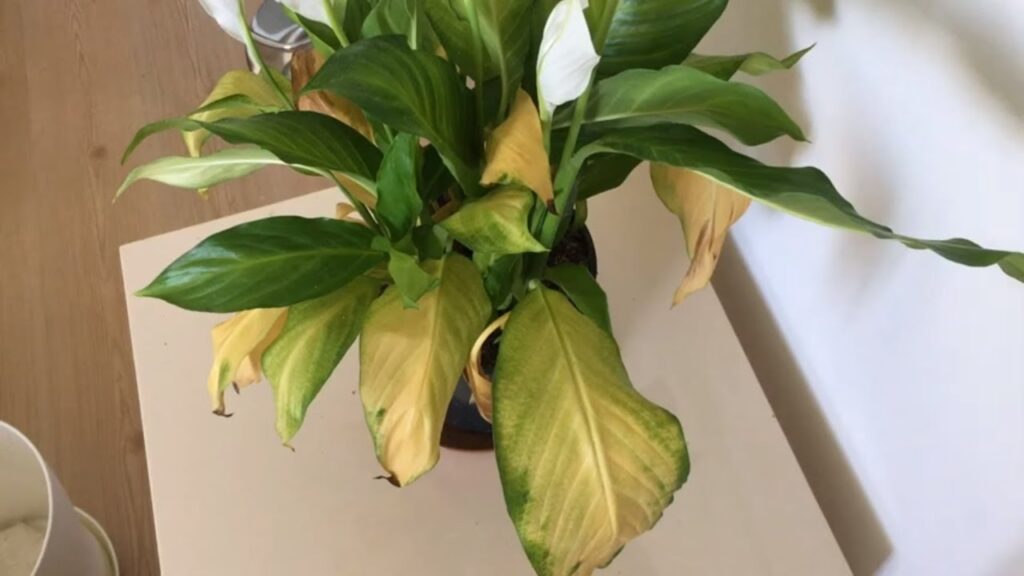
Peace lilies thrive in partial shade and bright indirect light, which is ideal for indoor plants. These plants do best in rooms that face north or east. Peace lily leaves essentially turn yellow when exposed to excessive direct sunlight. Plants with multiple colors, like variegated peace lilies, are more prone. Another sign of excessive light is brown spots or streaks on the foliage.
As a result of the plant’s inability to perform photosynthesis in too much shade, peace lily leaves can also turn yellow. The peace lily can’t sustain itself in this manner.
The Solution
On the ground of jungles, peace lilies are naturally found, thriving in the sunlight that is filtered by the branches above. Place your potted peace lilies by an east-facing window or in a bright area that gets indirect sunlight all day to replicate these conditions indoors.
If your peace lilies aren’t getting enough light, move them to a more sunny spot on your windowsill or elsewhere in and around your home, keeping them out of direct sunlight.
Planting peace lilies outdoors requires attention to detail. The location you select should either receive plenty of morning light or filtered sunlight all day long. The ideal location is in the shade close to an east-facing wall.
Temperature Fluctuations
The majority of people keep their houseplants in the same rooms of the house where they live, so the temperatures are usually fairly stable there. However, if you happen to have yours in a basement, vestibule, or unheated room during the winter, low temperatures can cause the foliage to turn yellow or brown.
Peace lilies once adorned the office where I used to work, but after a year or two, they all began to appear a little dejected. We came to the conclusion that by lowering the temperature to 50 when we left the building, we were actually doing more harm than good to the environment.
When the temperature consistently varies between the low 40s and the high 50s, the leaves start to show signs of stress by turning brown.
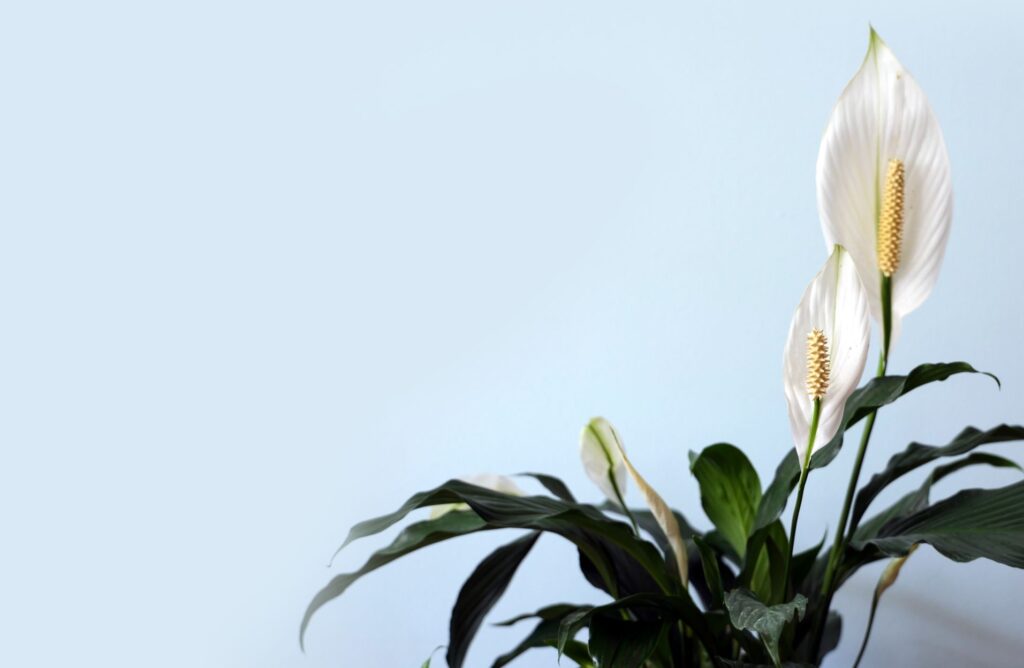
The Solution
Of course, the solution is to relocate them to a warmer location or raise the thermostat.
Your peace lily’s leaves will tell you when it’s too hot by turning yellow or brown. Any areas of yellow will be brightly colored rather than palely colored, and the brown portions will be dry and typically only found on the edges and tips of the leaves.
You’ll probably start to notice discoloration when the temperature routinely rises above 85°F. Add more shade to your plant or relocate it to a cooler area.
Pests and Diseases
However, if your peace lily is housed, you may occasionally have to deal with an aphid, mealybug, or spider mite infestation.
These annoying little bugs can cause a lot of stress for your plants, which can eventually result in yellowing leaves.
The few diseases that can affect peace lilies have the same effect. These include root rot and Phytophthora parasitica fungi, a fungal disease.
The Solution
Pests that have moved in on your peace lilies can be easily removed. Your plants should be protected from them by general good maintenance and plant placement.
It is simple to get rid of any aphids you do find, though. Pick them up off the leaves and either squeeze them between your fingers or place them in a jar of soapy water. A spray bottle of water could also be used to jet them off.
A quick neem oil spray should quickly rid your peace lilies of mealybugs and spider mites.
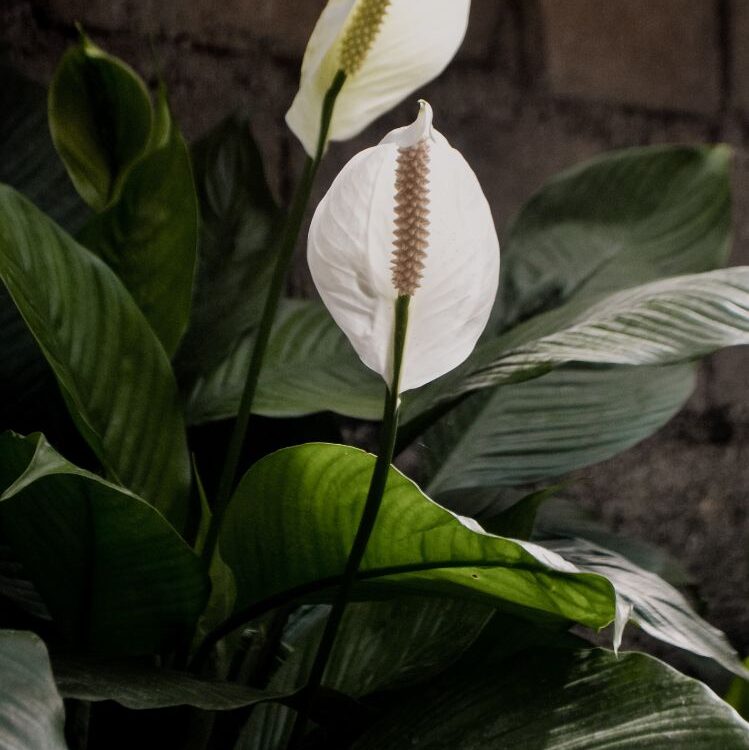
The fungi that are wreaking havoc on your peace lily are regrettably a major worry. To prevent the disease from spreading if the infection is severe, you might need to dispose of your peace lily. If you notice any grey or black fungal growth, it’s best to prune away any impacted leaves and keep an eye out for signs of escalation.
Your peace lilies should be protected from pests and diseases, especially indoors, by following good plant hygiene and care procedures.
Transplant Shock
The plant has most likely experienced shock if yellowing appears soon after transplanting and you don’t notice browning tips. Considering how hardy peace lilies are and how uncommon transplant shock is, it’s possible that it never happens.
Typically, wilting is the first symptom, and if the plant doesn’t recover right away, yellowing will appear.
The Solution
Repot early in the spring, before the growing season starts. If yellow leaves appear, remove them by pruning. Soon, brand-new ones will take their place.
Excess Minerals
Yellowing leaves can be brought on by overwatering as well as bad water quality. Does the water you drink contain a lot of minerals? Do you use water that has been softened? With the accumulation of minerals in the soil brought on by this type of water, leaves turn yellow.
The Solution
When this occurs, remove the yellowed leaves by pruning. After that, rinse the soil with filtered, bottled, or rainwater. As a last resort, repot the plant and supply it with fresh soil. Use a light, airy mixture that enables good airflow around the roots.
Only bottled, filtered, or rainwater will be used to make water in the future. To avoid overwatering, take care.
General Tips for Treating Peace Lily Leaves Turning Yellow
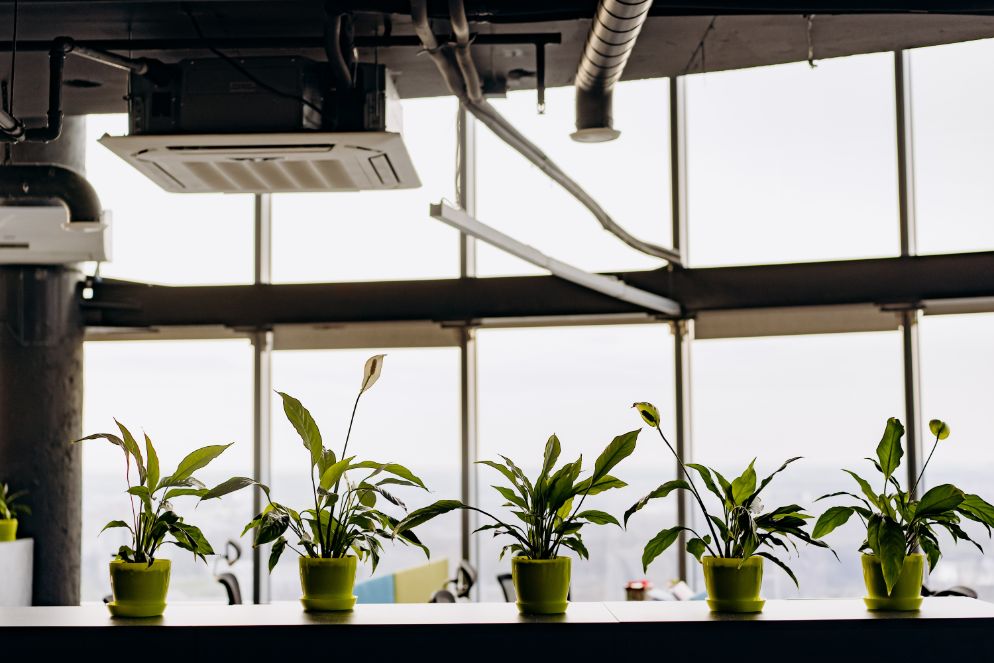
Here are some crucial suggestions for handling yellow leaves on your Peace Lily, whatever the cause.
- Don’t discard the plant! Once the issue has been addressed, healthy green leaves will quickly take the place of the yellow leaves on these plants because they quickly produce new leaves.
- Waiting is a terrible option; take action. You won’t endanger your plant by taking action to fix the yellow leaves on your peace lily because none of the solutions are extreme or difficult.
- Yellow leaves must be removed because they won’t turn green again. Yellow leaves are weakened and can cause more problems.
- To prevent the spread of any pests or diseases that may be a problem, sterilize your gardening equipment. Clean off any dirt first. Simple techniques include dipping or wiping them in 70% isopropyl alcohol, then letting them dry. Household cleaners like Lysol also function.
- Once the issue has been identified and fixed, keep a close eye on the plant until new leaves begin to grow. In spite of the fact that peace lilies are resilient and should recover quickly, you should make sure that your actions brought about a solution. In a few weeks, if the plant doesn’t begin to grow again, reexamine your growing environment. Numerous things could be the case.
Conclusion: Bring Peace Lilies Back the Green
The truth is that peace lilies aren’t as fussy as they might appear to be. Leaf discoloration is a relatively uncommon issue, despite the fact that there are numerous potential causes. And if it does, fixing it is typically not too difficult.
If a few of the leaves do turn yellow, it might just be aging. Make sure nothing is amiss by checking off our checklist. Give these low-light champions some love, and they won’t mope about losing a few leaves; they’ll bounce back stronger than ever!
FAQs
How Do You Tell If Peace Lily is Overwatered Or Underwatered?
Brown, Wilting Leaves: Overwatered peace lilies may also exhibit wilting or curled leaves paired with discoloration to brown. The browning can resemble the crispy, dried-out brown foliage of an underwatered plant, so it’s crucial to look for wilting instead of browning.
How Often Should You Water a Peace Lily?
Your Peace Lily enjoys weekly waterings, but it will tell you when it needs water by drooping its leaves. Feel free to water your plant only twice a month during the winter.
Can a Yellow Leaf Turn Green Again?
Usually, when a houseplant leaf turns yellow, it is about to die. A leaf’s green hue is attributed to chlorophyll. The plant abandons the leaf when it stops producing chlorophyll and starts utilizing any remaining nutrients in the leaf. That’s why once the leaf turns yellow, you generally can’t make it turn back green again.

